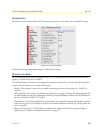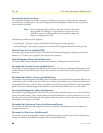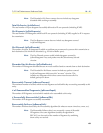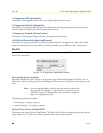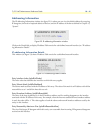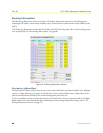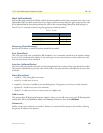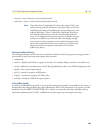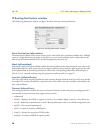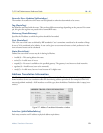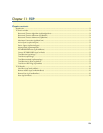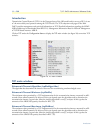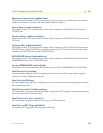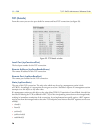
O/S forwarding table window 69
T1/E1 DACS Administrators’ Reference Guide 10 • IP
• direct(3)—route to directly connected (sub-)network
• indirect(4)—route to a non-local host/network/sub-network
Note The values direct(3) and indirect(4) refer to the notion of direct and
indirect routing in the IP architecture. Setting this object to the value
invalid(2) has the effect of invalidating the corresponding entry in the
ipRouteTable object. That is, it effectively disassociates the destina-
tion identified with said entry from the route identified with said
entry. It is an implementation-specific matter as to whether the agent
removes an invalidated entry from the table. Accordingly, manage-
ment stations must be prepared to receive tabular information from
agents that corresponds to entries not currently in use. Proper inter-
pretation of such entries requires examination of the relevant
ipRouteType object.
Protocol (ipRouteProto)
The routing mechanism via which this route was learned. Inclusion of values for gateway routing protocols is
not intended to imply that hosts must support those protocols.
• unknown(0)
• local(1)—Added by the DACS to support an interface. For example, adding a route for a new dial-in user.
• user(2)—Added by an administrator on the IP Routing Information table or via SNMP management tools.
• dspf(3)—Not currently implemented.
• rip(4)—Learned via reception of RIP packet.
• icmp(5)—Learned via reception of ICMP packet.
• radius(6)—Provided in RADIUS response packet.
Info (ipRouteInfo)
A reference to MIB definitions specific to the particular routing protocol which is responsible for this route, as
determined by the value specified in the route’s ipRouteProto value. If this information is not present, its value
should be set to the OBJECT IDENTIFIER { 0 0 }, which is a syntactically valid object identifier, and any
conformant implementation of ASN.1 and BER must be able to generate and recognize this value.



